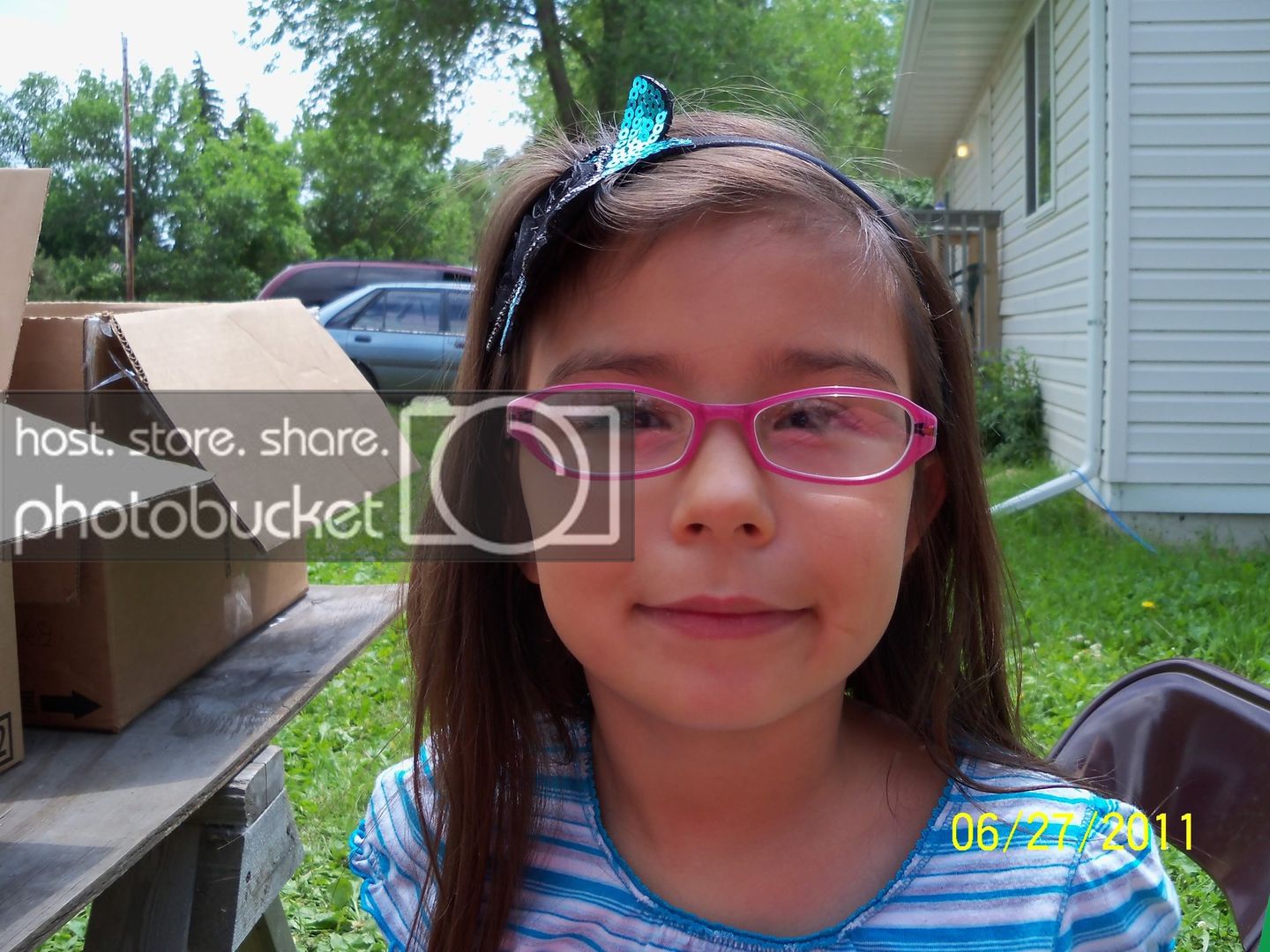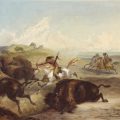My father knew what it was like to go hungry.
Even before the onset of the Great Depression, his family was intimately familiar with hunger. Mixed-blood Indians living off the rez, in an area where cowards on horseback stalked the countryside in sheets and white hoods, were not the most “employable.” Gramps traveled miles every day, on foot, looking for work. Sometimes he’d find something; just as often, he’d come trudging home, late at night, with nothing to show for it but sore feet and an empty stomach. If he was lucky, someone might hire him for 16 hours of backbreaking labor in exchange for a sack of beans, or a little rice – or on a really good day, a whole chicken (that Grandma had to pluck and dress). Most often, the beans or rice were served without salt, pepper, butter, or anything else.
To his dying day, my father hated rice.
But to hear him tell it, they were still lucky compared to some kids at his one-room schoolhouse. There were a pair of brothers who we invariably described as “dirt poor.” He used to tell the story of how, one day as the kids were dropped off by the school bus, one of the wealthier white kids tossed an unwanted hard-boiled egg out of his lunch sack onto the ground (presumably so that his mother wouldn’t know he’d wasted food). It landed in the dirt; already peeled, it was instantly covered. One of the “dirt poor” brothers pounced on it, blew a bit of the dirt off, and stuffed it in his mouth. It was the only food he’d had all day – indeed, probably for several days.
And, predictably, just like Dad, those two ragged little boys were ostracized and tormented by the other kids and the teachers. For the crime of being poor.
I don’t intend to go into the casual racism here that allowed Dad’s first-grade teacher to fail him twice without cause; or his third-grade teacher to refuse to call on him when he knew the answer to question, telling the other kids, “We won’t ask him; he’s too dumb to know anyway); or the systemic privation and malnutrition that destroyed his health and his ability to learn, and caused him to drop out of school at the end of eighth grade. Nor will I go into detail about the pre-diabetic hypoglycemia that plagued him his entire life, nor the fact that all three of my siblings were diabetic.
But I do know what it’s like to wonder where your next meal is coming from.
I know my father’s humiliation when we had to use food stamps and he drove 35 miles to another town so no one we knew would see.
I know what it’s like to be hungry during the school day, and to watch my grades plummet because I couldn’t concentrate.
HUNGER – the real, true, gnawing, tearing, murderous kind of constant hunger that destroys lives – only one generation removed from me, remains a part of my ancestral memory.
I’m not talking about the sanitized popular term “food insecurity.” I’m not talking about not being able to afford steak instead of ground beef. I’m talking about the physical, psychological, and spiritual starvation caused by real poverty and real malnutrition. And it’s something our peoples battle every single day, all over this country – mostly unnoticed by a comparatively wealthy population that wouldn’t care anyway.
HUNGER IN INDIAN COUNTRY
One of the most pernicious myths surrounding hunger in this country is the one that says that if you’re overweight, you can’t be going hungry. to the contrary, one of the most obvious manifestations of malnutrition is obesity, and it’s rampant among our peoples. It’s also killing us at a rate that rivals anything tried in previous centuries.
In 2003, the U.S. Commission on Civil Rights published A Quiet Crisis: Federal Funding and Unmet Needs in Indian Country. Pages 99-112 deal with issues of food and nutrition. The numbers – or, rather, the lack thereof in terms of funding allocations to help Native communities feed themselves – are staggering.
But it’s part and parcel of a larger dynamic of poverty, racism, and marginalization. As I wrote a few months ago in an edition of Sage and Sweetgrass in SheKos:
As many of you know, I’m part of the Native American Netroots team, founded and led by Kossack navajo. Many of you participated in our diaries on the long-term winter weather emergency that hit several South Dakota reservations, and donated generously of your money, supplies, time, and support. We need your help again. Some background information follows; at the end, what you can do to help.
Pine Ridge – Some Numbers
During the winter, we focused on three South Dakota reservations where the weather and its effects were most severe: Cheyenne River, Pine Ridge, and Rosebud. For purposes of today’s edition, I’m going to focus on Pine Ridge, but all three reservations – and many more throughout the nation – are in similar straits.
At Pine Ridge (like many other reservations), it is not unusual to find women as heads of household. Moreover, they’re often housing and caring for multiple generations: children, grandchildren, sometimes great-grandchildren, as well as elderly parents or grandparents. Frequently, they take in uncles, aunts, nieces, nephews, and distant cousins who are in need. Large numbers of women are de facto guardians of and primary caregivers for their grandchildren. None of this is particularly surprising, given that the average household income is less than $3,800 a year.
Yes, you read that right: The average household income on the Pine Ridge Reservation is less than three thousand, eight hundred dollars annually.
Further complicating the situation are the inhumane living conditions on many reservations. I’ve seen statistics estimating the life expectancy of the average man at Pine Ridge between age 43 and age 48 – equivalent to that of the average Somali male. At a life expectancy of 52, Pine Ridge women don’t fare much better. The reservation’s unemployment rate exceeds 80%; its poverty rate is one of the worst in the nation; both chronic illness, such as diabetes, and acute illnesses, such as certain forms of cancer, appear at rates between 100% and 800% higher than in the nation as a whole; and the adolescent suicide rate is 150% higher than in the general U.S. population. Alcoholism and methamphetamine addiction long ago reached epidemic proportions.
The USDA operates the Food Distribution Program on Indian Reservations (FDPIR). It is via this program that most reservations receive what we call “commodities” – a word that the government no longer considers “politically correct” because of the bad reputation associated with it. Think “government cheese”: generic Velveeta. Generic canned foods. Processed, refined, bleached flour, sugar, rice, pasta, bread. Ground beef and other cheap meats from huge factory farms, riddled with growth hormone, antibiotics, and Spirit knows what else. Dietary crap, in other words. You can find a list of the foods available for 2010 here. Someday, I’m going to devote a diary to the damage these programs have done – and yet, for many of our communities, they’re all that stands between our people and literally starving to death.
Today, I’m also going to crib shamelessly from an earlier diary of mine, In Our Blood: The Diabetes Epidemic in Native America. Because another major manifestation of hunger and malnutrition in our communities is diabetes – and it is an epidemic.
ETHNIC INDICATORS
Only in recent years has the federal government become interested in funding research into ethnic disparities in the incidence of diabetes. Data are further limited by many of the same factors that skew research into any issue that affects underserved communities: poverty, lack of access to medical, lack of access to studies and clinical trials, language and cultural barriers, distrust of governmental and/or dominant-culture endeavors, and lack of effective outreach to such communities. However, the issue is now on the radar of the national Institutes of Health and the Department of Health and Human Services, which publishes the following 2006 statistics:
* American Indian/Alaska Native adults were 2.7 times as likely as white adults to be diagnosed with diabetes.
* American Indians/Alaska Natives were almost twice as likely as non-Hispanic whites to die from diabetes in 2006.
* American Indian/Alaska Native adults were 1.6 times as likely as White adults to be obese.
* American Indian/Alaska Native adults were 1.3 times as likely as White adults to have high blood pressure.
And an analysis of the 2005 patient population of the Indian Health Service produced the following statistics:
* Data from the 2005 IHS user population database indicate that 14.2 percent of the American Indians and Alaska Natives ages 20 years or older who received care from IHS had diagnosed diabetes. After adjusting for population age differences, 16.5 percent of the total adult population served by IHS had diagnosed diabetes, with rates varying by region from 6 percent among Alaska Native adults to 29.3 percent among American Indian adults in southern Arizona.
* After adjusting for population age differences, 2004 to 2006 national survey data for people ages 20 years or older indicate that 6.6 percent of non-Hispanic whites, 7.5 percent of Asian Americans, 10.4 percent of Hispanics, and 11.8 percent of non-Hispanic blacks had diagnosed diabetes. Among Hispanics, rates were 8.2 percent for Cubans, 11.9 percent for Mexican Americans, and 12.6 percent for Puerto Ricans.
Got that? American Indian/Alaska Native adults had a diabetes diagnosis rate of 16.5%. compared to 6.6% for non-Hispanic whites. The Pima in southern Arizona led the rate of diagnosis, at a staggering 29.3%. In practical terms, what these numbers mean is that Native Americans have the highest age-adjusted incidence of diabetes of any ethnic group. And these are just those who have been diagnosed. Thousands more go undiagnosed for years – often until they die from complications resulting from undiagnosed diabetes.
In 2006, diabetes was the seventh-leading cause of death in the United States. However, Native Americans constitute a disproportionately high percentage of members of that particular demographic: Diabetes-related mortality rates are substantially higher in Native populations: 39.6 per 100,000, compared to 1.9 per 100,000 for non-Hispanic whites. Keep in mind, however, that these number are almost certainly much lower than the reality: A study of 1986 data found that, on death certificates, Native American ancestry was underreported at a rate of 65%. The same analysis concluded that diabetes was 4.3 times more likely to be the underlying cause of death for those listed on their death certificates as Native American than for whites.
And the rates are getting worse, not better. Part of this may be attributable to higher rates of diagnosis, but the largest part is undoubtedly higher actual incidence.
CHILD AND TEEN GROWTH RATES
The American Diabetes Association reports that the decade between 1994 and 2004 saw a 68% increase in Type II diabetes among self-identified American Indians and Alaska Natives between the ages of 15 and 19.
Read that again for a moment: nearly a 70% jump in diabetes among older teenagers – in one decade.
According to the Indian Health Service:
American Indian and Alaska Native children have obesity rates of 40%, four times the rate for the general population.
Obesity is one of the greatest risk factors for developing Type II diabetes – and obesity among children and teenagers is rampant among American society generally, as well as in Native communities particularly.
WHY NATIVE POPULATIONS ARE AT GREATER RISK
We are a mere 100 years removed from living as hunter/gatherers, our ancestral methods of sustaining our peoples. Indeed, experts often describe us as coming from “hunter-gatherer societies”, and as having a “thrifty” genetic type, biologically engineered to store food as fat during times of plenty, to provide fuel and sustenance during extended periods when food was scarce, such as winter, drought, or migration. In other words, our bodies had adapted perfectly to our physical environment.
But with contact came the reservation.
With the reservation came deprivation: of our traditional hunting grounds, including the wanton destruction of the buffalo herds; of the environments where we harvested food, herbs, and medicine; of our ancestral lands when many of our tribes engaged in sophisticated farming and crop rotation practices; of access to many of our cultural and spiritual traditions and methods of healing.
And with the reservation came new dangers: of previously-unknown infectious agents and disease; of tobacco (not the old asemaa of our medicine persons, consisting of herbs such as red willow bark, bearberry, and mullein, but the modern asemaa of tar and nicotine); of alcohol (not the fermented medicine and ceremonial drinks of our ancestors, but whiskey, rum, and moonshine); of a diet restricted to non-indigenous foods, that would eventually become a diet consisting almost entirely of refined, processed foods low in protein and complex carbohydrates but high in simple carbs and trans fats.
And residents of modern reservations, with median household incomes well below the federal poverty line (often well below $10,000 per year) and with staggering rates of unemployment (as much as 85%), often must rely almost wholly on government welfare programs, including refined and processed commodity foods. Whole grains, fresh produce, and other healthy foods are far too expensive, and on many reservations, there are no grocery stores or markets that carry such items anyway. And over the years, refined ingredients have infiltrated the recipes for our traditional foods, so that here in the Southwest, for example, people have for decades used bleached, refined white flour in their tortillas – because it is both available and affordable. And thus is a staple of the traditional diet converted into an instrument of disease.
ACTION: WHAT YOU CAN DO
On the personal level:
* If you’re of Native ancestry, get tested. It only takes a pinprick on the end of a finger.
* If you have loved ones of Native ancestry, encourage them to do the same.
* If you or a loved one gets a diagnosis of diabetes, enroll in a diabetes management program.
* Eat right. Exercise. Don’t smoke; don’t drink. Monitor your glucose levels, and take charge of your own health.
On the local level:
* If you live on or near a reservation, encourage the development of tribal diabetes education and management programs.
* Support related culturally-appropriate non-profit efforts and local businesses that serve such populations.
* Encourage cultural education and sensitivity.
On the national level:
* Contact your members of Congress; demand that they fulfill the nation’s statutory obligation to fund the Indian Health Service (IHS) fully.
* Lobby for additional funding for culturally-appropriate diabetes research and prevention programs through IHS.
* Lobby for federal funding for tribal initiatives to maintain diabetes management and traditional treatment programs, including tobacco and alcohol cessation programs.
* Lobby for federal funding for investment and development dollars to bring healthy food initiatives and businesses to reservations.
* Demand that federal assistance programs distribute healthy foods, such as whole grains, and provide access to fresh fruits and vegetables.
* Lobby for funding for research and development, through the National Institutes of Health, the Indian Health Service, and the Association of American Indian Physicians, dedicated to prevention, treatment, and education programs in Native populations.
And give to Feeding America (FA). I don’t know yet whether FA explicitly provides funding to food banks and other groups that serve reservations and Native communities, but in the larger scheme of things, it doesn’t matter: It serves Americans who are our brothers and sisters, fathers and mothers, children and elders, whatever their ethnicity. And that’s worth supporting.
Chi miigwech.
If you want to donate money, here is the Feeding America donation page.
If you have time to volunteer, here are some handy tools to find out what assistance is needed:
–Plug your zip code into this search engine to find opportunities in your area to assist hunger organizations.
–Typing in your zip code and state in this search engine will locate food banks in your area.
–Clicking onto to your state on this map will return results for homeless shelters and soup kitchens in your area.
Feeding America Blogathon Diary Schedule (all EDT):
Saturday, Sept 25:
10:00a — rb137
1:00p — teacherken
4:00p — Patriot Daily
7:00p — srkp23
10:00p — boatsie
Owls — Jay in Portland
Sunday, Sept 26
10:00a — JanF
1:00p — Aji
4:00p — Timroff
7:00p — Chacounne
10:00p — blue jersey mom





Leave a Reply